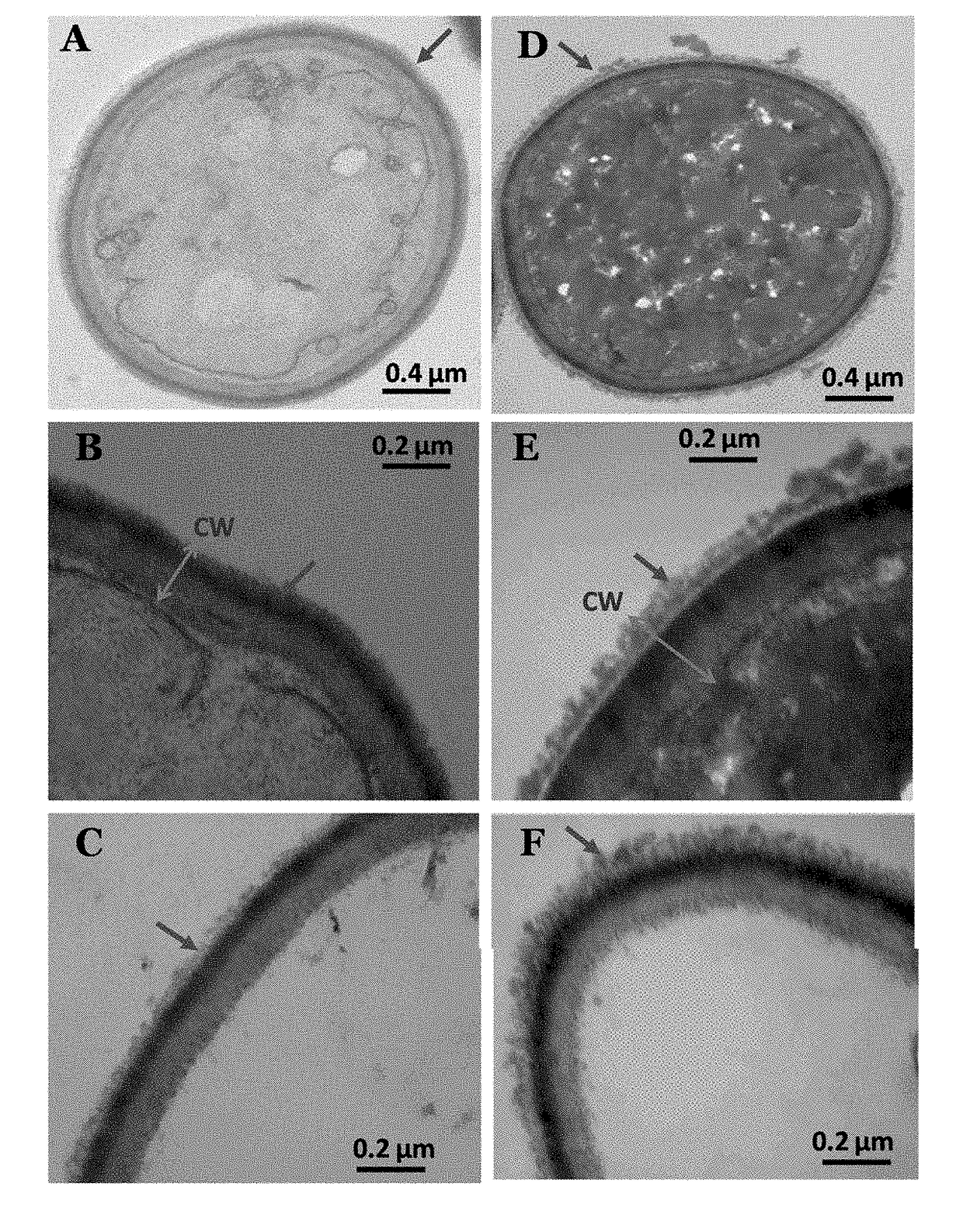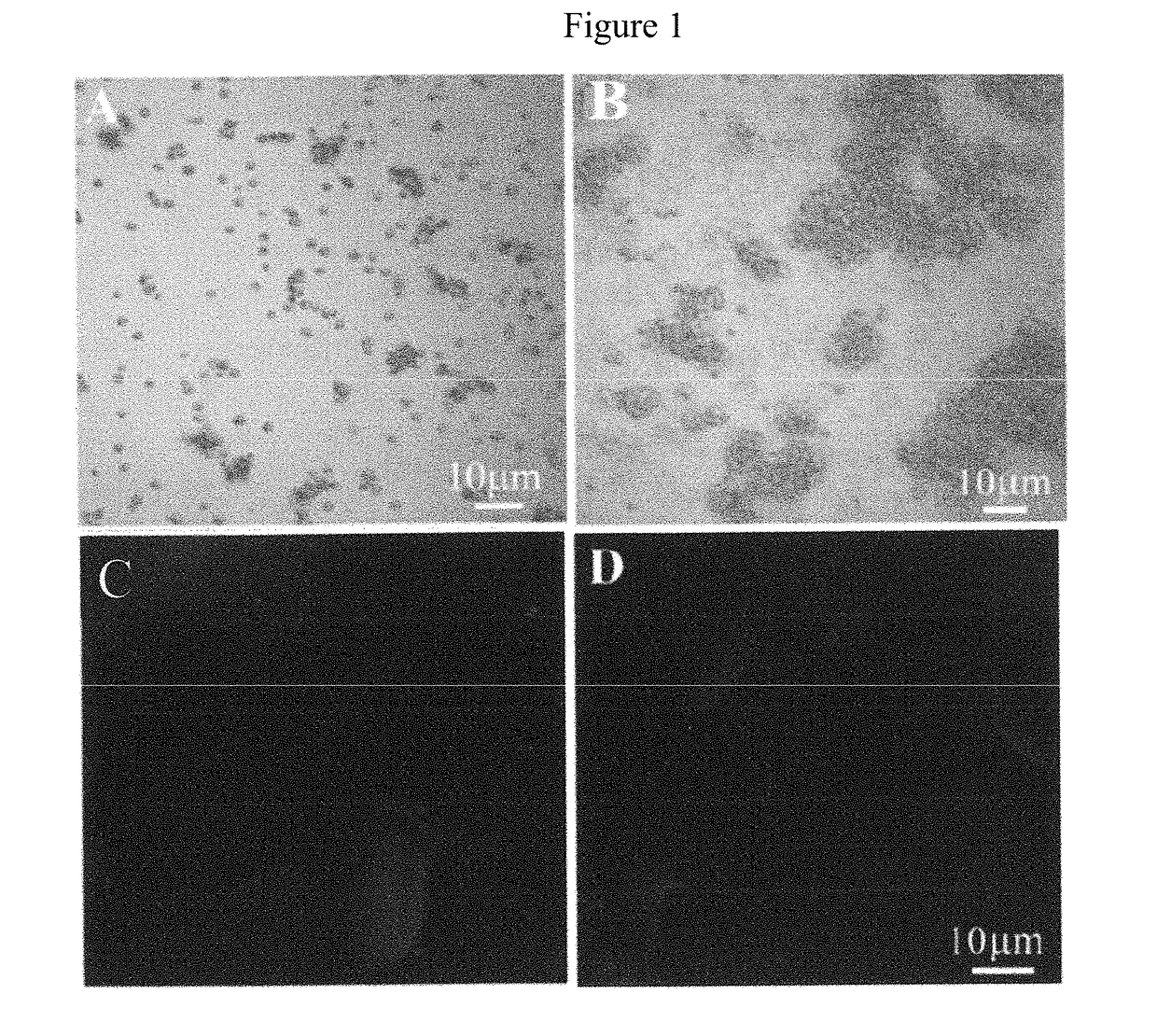Compositions comprising yeast cells and polyphenols and their use
a technology of polyphenols and yeast cells, applied in the field of polyphenols, can solve the problems of denatured wine, negative sensory impact of polyphenols on wine, etc., and achieve the effect of preserving wine quality, color and aromas
- Summary
- Abstract
- Description
- Claims
- Application Information
AI Technical Summary
Benefits of technology
Problems solved by technology
Method used
Image
Examples
example i
Grapes and Preparation of Skin Proanthocyanidins
[0061]The grape skin proanthocyanidines fraction was purified from the skin of 1.25 kg Muscat berries. Proanthocyanidines were extracted with 2.5 liters of Acetone / H2O / Methanol (51 / 34 / 15), under stirring and during 2 h.8 The mixture was centrifuged for 20 min at 2000 g and 20° C. The solid phase was extracted again with the same solvent during one night at 4° C. and the mixture was centrifuged. The supernatants were pooled, filtrated, concentrated under vacuum at 30° C. (final volume 200 mL) and stored at −80° C. before the following steps. Chlorophyll was removed by three extractions with hexane and the proanthocyanidines extract was applied on a styrene / divinylbenzene Diaion resin in batch conditions. The resin was washed several times with H2O acidified with trifluoroacetic acid (TFA, 0.05% v / v) to remove sugars and proteins (followed by refractometer) and proanthocyanidines were recovered with methanol acidified with Trifluoroaceti...
example ii
Wine Polyphenols
[0062]A wine polyphenol pool (WP) was purified from 9 L of a Merlot wine, produced in 2012 at the INRA Experimental Unit of Pech Rouge (Gruissan, France). Separation was achieved by applying the wine to a 7 L bed volume column filled with a styrene / divinylbenzene Diaion resin. The wine flow rate was of 4.2 L·h−1. The resin was rinsed with two bed volumes of distilled water (flow rate 4.2 L.19 h−1) to remove water soluble compounds. The elution was followed by refractometry. The phenolic pool was finally eluted with 5 L of methanol and 12 L of 96 / 4 v / v ethanol / water, both solvents being acidified with TFA (0.05%). The ethanolic and methanolic extracts were pooled and the solvents removed by vacuum evaporation at 40° C. The polyphenol pool was then freeze-dried and stored at—80° C. under argon atmosphere before further use. The polyphenol composition of the pool was (on a dry weight basis): 29.3 mg·g−1 anthocyanins, 7.7 mg·g−1 flavan-3-ol monomers, 32.7 mg·g−1 phenolic...
example iii
Yeast Cells and Preparation of Yeast Cell Walls
[0063]The yeast strain used in the present work is a commercial Saccharomyces cerevisiae strain (Lallemand, Montreal, Canada) commonly used in oenology. Yeast was propagated aerobically at 32° C. in a fed-batch manner, with a growth rate of 0.18 h−1, for a total of 17 h. Feed substrate was beet molasses diluted to allow suitable delivery of the molasses to the propagation and ammonia hydroxide (5%) was used as the nitrogen source. The yeast biomass (Y) was either frozen at −20° C. and conserved as such or submitted to further post-harvesting treatments to obtain inactivated yeast fractions. The viability of frozen cells (Y), was determined prior interaction assays through flow-cytometry associated with staining techniques and growth on Petri plates. Results (1 and 2.4% respectively) indicated that most cells were dead. A part of the biomass was inactivated by thermal treatment, achieved by holding the yeast cream at 70° C. for 15 minute...
PUM
| Property | Measurement | Unit |
|---|---|---|
| molecular weight | aaaaa | aaaaa |
| molecular radius | aaaaa | aaaaa |
| molecular weights | aaaaa | aaaaa |
Abstract
Description
Claims
Application Information
 Login to View More
Login to View More - R&D
- Intellectual Property
- Life Sciences
- Materials
- Tech Scout
- Unparalleled Data Quality
- Higher Quality Content
- 60% Fewer Hallucinations
Browse by: Latest US Patents, China's latest patents, Technical Efficacy Thesaurus, Application Domain, Technology Topic, Popular Technical Reports.
© 2025 PatSnap. All rights reserved.Legal|Privacy policy|Modern Slavery Act Transparency Statement|Sitemap|About US| Contact US: help@patsnap.com



